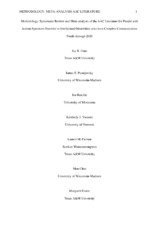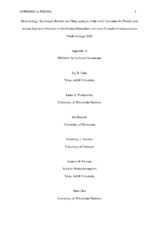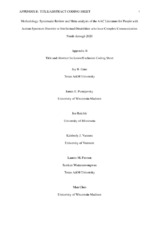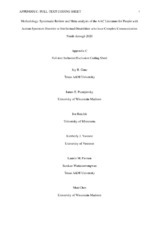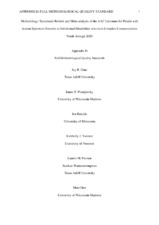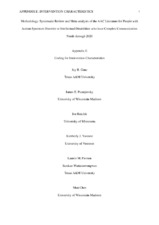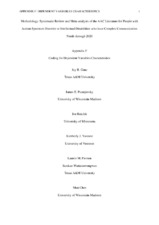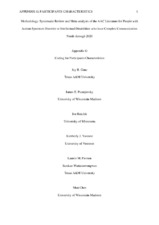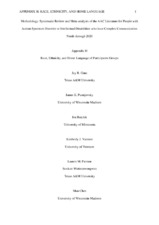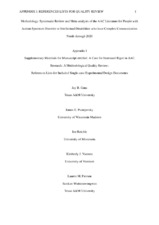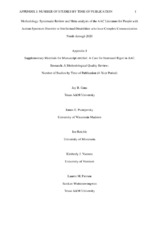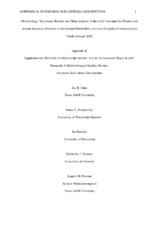| dc.creator | Ganz, Jay | |
| dc.creator | Pustejovsky, James | |
| dc.creator | Reichle, Joe | |
| dc.creator | Vannest, Kimberly | |
| dc.creator | Pierson, Lauren | |
| dc.creator | Wattanawongwan, Sanikan | |
| dc.creator | Chen, Man | |
| dc.creator | Foster, Margaret | |
| dc.creator | Fuller, Marcus | |
| dc.creator | Haas, April | |
| dc.creator | Hamilton, Bethany | |
| dc.creator | Sallese, Mary | |
| dc.creator | Smith, S.D. | |
| dc.creator | Yllades, Valeria | |
| dc.date.accessioned | 2020-10-12T22:06:16Z | |
| dc.date.available | 2020-10-12T22:06:16Z | |
| dc.date.issued | 2020-10-12 | |
| dc.identifier.uri | https://hdl.handle.net/1969.1/189532 | |
| dc.description.abstract | A comprehensive meta-analysis examining the impacts of augmentative and alternative communication for individuals with complex communication needs was conducted, examining the relationship between social-communicative and educational outcomes and use of augmentative and alternative communication devices and across potential moderating variables. This document reports the methodology of the project as a whole, describing overarching procedures. Given the comprehensiveness of the review and meta-analysis, results of this review are reported in digestible groupings of types of research designs, types of research questions, and moderator groupings. Each of the resulting papers cite this primary document, as do additional reviews derived from the assembled data set.
The documents herewith report the overarching methodology of the project, including the following. The document searches occurred in 2018 and 2020, resulting in 7,327 documents reviewed for title/abstract indication of meeting inclusion criteria. Full text document review was conducted for 1,758 documents for the next inclusion/exclusion gate. Documents were divided into group design (n = 132) and single-case experimental design (SCED) documents (n = 547) and reviewed for basic design criteria, resulting in 59 group design documents and 257 SCED documents. Lead project authors conducted screening remaining documents for false positives, resulting in 20 group and 176 SCED documents remaining for further analysis. Data extraction and potential moderator variable coding procedures are described in detail, with relevant coding manuals and other materials attached. Effect size metrics used for meta-analytic procedures are detailed. | en |
| dc.description.sponsorship | The research described here is supported by the Institute of Education Sciences, U.S. Department of Education, through Grant R324A180110 to Texas A&M University. The opinions expressed are those of the authors and do not represent views of the Institute or the U.S. Department of Education | en |
| dc.language.iso | en_US | |
| dc.subject | Systematic Review | en |
| dc.subject | Meta-analysis | en |
| dc.subject | Augmentative and alternative communication | en |
| dc.subject | Autism Spectrum Disorder | en |
| dc.subject | Intellectual Disabilities | en |
| dc.title | Methodology: Systematic Review and Meta-analysis of the AAC Literature for People with Autism Spectrum Disorder or Intellectual Disabilities who have Complex Communication Needs through 2020 | en |
| dc.type | Article | en |
| local.department | Educational Psychology | en |


